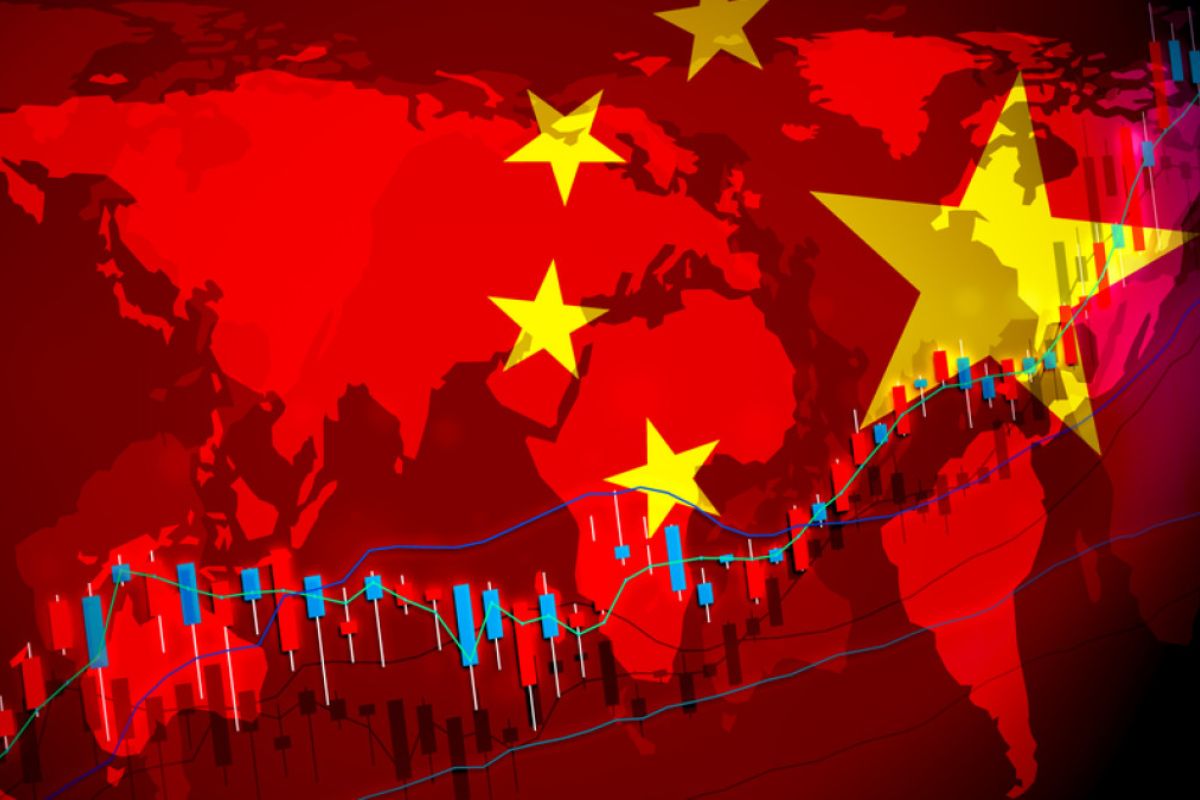China’s Economic Boost: The intertwined fates of China’s economic boost and South Korea’s GDP have garnered significant attention in recent times, as both nations navigate through a complex landscape of global market influences and domestic economic indicators.
While China’s economic confidence remains unwavering, the potential for a debt crisis looms large, casting a shadow of uncertainty over its future trajectory.
On the other hand, South Korea’s economy presents a contrasting picture, with mixed indicators and market trends raising questions about its resilience in the face of global headwinds.
As the global economic landscape continues to evolve, market expectations and central bank moves will play a pivotal role in shaping the outcomes for both nations.
In this discussion, we explore the intricacies of these economic narratives, unraveling the threads that connect China’s economic boost and South Korea’s GDP, leaving us pondering the possibilities that lie ahead.
Key Takeaways
- Chinese central bank actions, such as injecting liquidity and supporting asset prices, have ignited optimism and triggered speculation in the market.
- China’s total debt surpassing 270% of its GDP poses a significant risk, and there is an urgent need for proactive measures to address the potential debt crisis.
- The South Korean economy experienced a slight slowdown in Q4 2023 GDP growth, and the country’s KOSPI index saw a significant 7% decline, highlighting the challenges faced by the economy.
- Investor confidence is boosted by robust U.S. earnings reports and the dominance of the tech sector, while caution prevails due to potential market volatility and geopolitical tensions.
Also Read: Midea Ambitious Move: Navigating China’s Economic Shift Through Strategic Overseas Expansion
Asian Market Sentiment and Central Bank Moves
The recent surge in Asian market sentiment and central bank moves has sparked both optimism and speculation among investors.
The Chinese central bank’s decision to inject liquidity and support asset prices has significantly contributed to the positive momentum. By slashing bank reserves and injecting around $140 billion, the People’s Bank of China has fueled a rally in China and Hong Kong.
This move, combined with PBOC Governor Pan Gongsheng‘s commitment to implementing policies that enhance commercial property loans, has further bolstered the ongoing rebound in risk assets and the yuan.
Investors are closely monitoring the sustainability of this improved sentiment towards China and Hong Kong, as it has become a key focal point in Asian markets.
The central bank’s actions have not only ignited optimism but have also triggered speculation about the potential long-term consequences of such measures.
Global Market Influences and Record Highs
Global market dynamics are currently shaping the investment landscape, with robust U.S. earnings reports and the rise of chipmaker stocks propelling the S&P 500 to another record high. This surge in the market has evoked a range of emotions among investors, from excitement to caution.
Here are four key takeaways from these global market influences and record highs:
- Confidence boost: The strong U.S. earnings reports, particularly from companies like Netflix, have instilled confidence in investors, signaling a healthy economic outlook.
- Tech sector dominance: The rise of chipmaker stocks underscores the growing dominance of the technology sector, fueling optimism for future growth and innovation.
- Asian market disparities: While the S&P 500 continues to soar, other key indices like South Korea’s KOSPI face challenges, highlighting the divergent performances across different regions.
- Uncertainty looms: Despite the record highs, there is a sense of caution as investors remain wary of potential market volatility and the lingering impact of geopolitical tensions.
These global market influences and record highs serve as a reminder of the ever-changing nature of the investment landscape, demanding a careful and informed approach for investors seeking mastery in navigating these uncertain times.
South Korea’s Economic Indicators and Market Trends
Amidst the global market influences and record highs, South Korea’s economic indicators and market trends reveal a sobering reality of a slight slowdown in GDP growth for Q4 2023. Official figures are expected to confirm this downturn, highlighting the challenges faced by the country’s economy.
A closer look at the quarter-on-quarter and year-on-year growth rates will provide a clearer understanding of the extent of this deceleration. Additionally, South Korea’s benchmark KOSPI index has experienced a tough start to 2024, with a significant 7% decline. This decline is not isolated, as it reflects broader regional trends that have impacted investor sentiment. To illustrate the significance of these market trends, let’s take a closer look at the following table:
| Economic Indicator | Q4 2023 Growth Rate |
|---|---|
| GDP | Slight slowdown |
| KOSPI Index | 7% decline |
These figures highlight the challenges faced by South Korea’s economy, suggesting a need for careful monitoring and strategic measures to ensure sustained growth in the future.
China’s Economic Confidence and Potential Debt Crisis
China’s economic confidence and the looming threat of a potential debt crisis have become key concerns in the global financial landscape. As the central bank takes steps to boost confidence, doubts remain about the long-term effectiveness of these measures.
Here are four reasons why China’s economic confidence is waning and a potential debt crisis is on the horizon:
- Skyrocketing debt levels: China’s total debt has surged to over 270% of its GDP, raising concerns about its ability to sustain economic growth.
- Shadow banking risks: The proliferation of shadow banking activities in China has created a web of interconnected risks that could trigger a financial meltdown.
- Property market bubble: The overheated property market poses a significant risk to China’s economy, as a burst bubble could lead to a wave of defaults and financial instability.
- Slowdown in economic growth: China’s economic growth has been slowing down, exacerbating concerns about its ability to service its debt obligations.
These factors highlight the precarious state of China’s economy and the urgent need for proactive measures to address the potential debt crisis.
Global Economic Landscape and Market Expectations
The evolving international economic landscape and market expectations are shaping the outlook for global financial markets. Investors are closely monitoring the release of the S&P Global PMIs in the U.S. and preliminary PMI data in Europe, as these indicators provide valuable insights into the health of these economies.
Additionally, expectations from the Bank of Canada are being carefully considered, as any changes in monetary policy can have significant repercussions on market sentiment.
Furthermore, the recent victory of Donald Trump in New Hampshire’s Republican presidential contest has sparked market reactions and raised concerns about the potential impact on European stocks.
These complex global economic dynamics and the multitude of factors influencing market sentiment and performance highlight the need for investors to stay informed and adaptable in order to navigate this ever-changing landscape successfully.
Conclusion Of China’s Economic Boost
The intertwining economies of China and South Korea have been the subject of intense scrutiny and speculation. While China’s economic boost and South Korea’s GDP growth have been promising, there are concerns about potential debt crises and the overall global economic landscape.
As central banks make moves and market influences remain unpredictable, it is imperative to closely monitor these developments and their potential implications. The future of these economies hangs in the balance, and market expectations are high.




